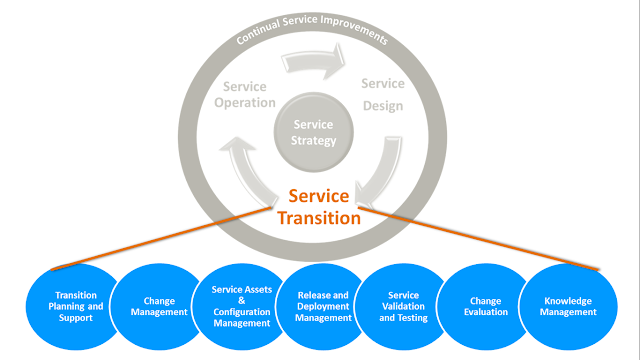Purpose of Service Transition
The purpose of the service transition stage of the service lifecycle is to ensure that new, modified or retired services meet the expectations of the business as documented in the service strategy and service design stage of the life-cycle.The value delivered by Service Transition to the business:
- Enable projects to estimate cost, timing, resources and risks associated with transition
- Result in higher volumes of successful change
- Makes it easier for people to adopt and follow
- Enable service transition assets to be shared and re-used across projects and services
- Reduce delays from unexpected clashes and dependencies
- Reduce the effort spent on managing service transition test and pilot environments
- Improve expectation setting for all stakeholders involved in service transition
- Increase confidence of delivering new or changed service to specification
- Ensure that new or changed services will be maintainable and cost-effective
- Improve control of service assets and configurations
Service Transition Processes
There are seven main processes under Service Transition stage of ITIL lifecycle:- Transition Planning and Support
- Change Management
- Service Asset and Configuration Management
- Release and Deployment Management
- Service Validation and Testing
- Change Evaluation
- Knowledge Management.
Transition Planning and Support process helps to plan and coordinate the resources to deploy a major Release within the predicted cost, time and quality estimates.
Change Management process helps to control the lifecycle of all Changes; enable beneficial Changes to be made, with minimum disruption to IT services.
Service Asset and Configuration Management process helps to maintain information about Configuration Items required to deliver an IT service, including their relationships.
Release and Deployment Management process helps to plan, schedule and control the movement of releases to test and live environments.
Service Validation and Testing process helps to ensure that deployed Releases and the resulting services meet customer expectations, and to verify that IT operations is able to support the new service.
Change Evaluation process helps to assess major Changes before proceeding to the next phase in their lifecycle.
Knowledge Management process helps to gather, analyze, store and share knowledge and information within an organization.

No comments:
Post a Comment